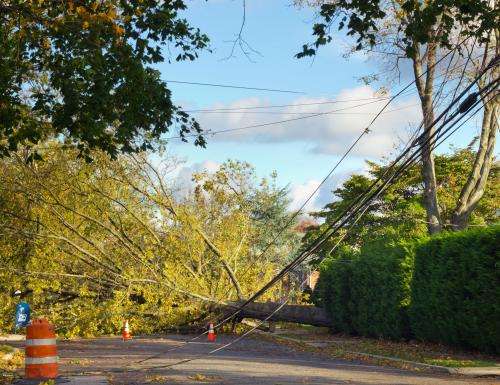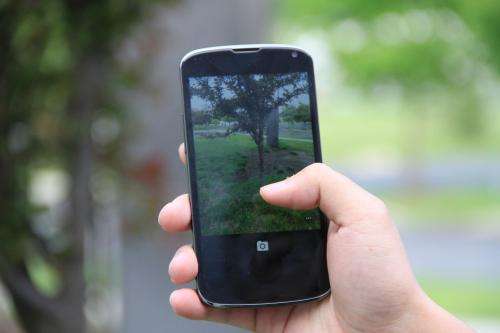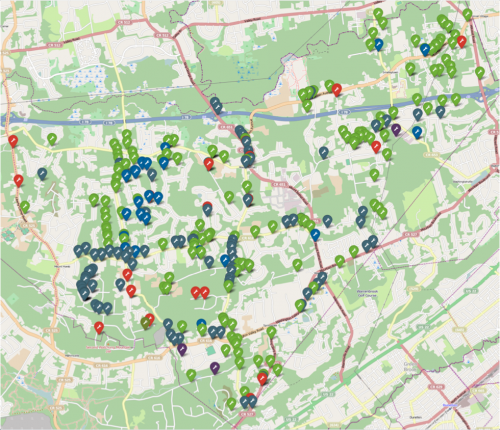Engineers create smartphone app to cut risk of power outages

An easy-to-use smartphone app developed by Rutgers engineers will help keep the lights on in a heavily wooded New Jersey suburb that suffered widespread power outages during Superstorm Sandy.
Officials in Warren Township, a country-like community nestled in Somerset County's Watchung Mountains, knew they could cut the risk of future power outages if they documented vulnerable spots in the utility network, such as branches dangling perilously close to wires or poles cracking and leaning. But sending police and municipal workers to sniff out these trouble spots would be expensive and disruptive to municipal services.
Rutgers and the township committee agreed to a solution – crowdsource the task.
Crowdsourcing, an information-age technique that parcels out a large job to a community of unrelated experts – looked like a promising approach to Warren's task. But it would work only if gathering the data and organizing it could be simplified.
Janne Lindqvist, assistant professor in the Department of Electrical and Computer Engineering, was up to the task. He had just received National Science Foundation funding to research crowdsourcing in local communities, and Warren Township's challenge proved an ideal match for his concepts.
"The idea is basically simple," Lindqvist said. "You have a smartphone app that walks you through documenting the hazard. Users are prompted to take a photo of the problem, classify it and verify the location provided by the phone's location-sensing capability."

Hit "send," and the hazard is catalogued in a server.
Warren Township's utility advisory committee advertised for volunteers in the community, and some members of the committee even volunteered themselves. In September of 2013, a team of eight volunteers fanned out across the township using Android-based smart phones with the app Lindqvist and his students developed.
"They managed to cover the township in eight days and document 351 hazards along 317 miles of wire," Lindqvist said.
The researchers' more challenging task was developing server software to capture, classify and present the data. The information had to be easy to deliver to the utility companies that serve the township, so the researchers made it possible to classify common types of hazards, such as branches that were leaning on wires, and to collect all the hazards in a specific neighborhood.
By presenting the data in such an organized manner, the township's two electric utilities were able to correct all of the problems before the beginning of the mercifully quiet 2014 hurricane season.

Lindqvist considers his team's work as more than a technical innovation.
"This is a public policy innovation as well," he said. "When problems are clearly documented and presented to the utilities, they have to check the problems and deal with them. They can't say after a disaster that they weren't aware of them."
By working with the township, the researchers learned that various community processes are candidates for crowdsourcing, and that a well-designed, task-specific app can have a substantial impact. They also learned that paying attention to the details – a straightforward visual interface, reducing the amount of interaction needed, and automatically loading as much information as possible – maximizes productivity.
Lindqvist continues to work with the township and is looking for opportunities to work with other communities.
For its innovative use of technology, Warren Township will receive the 2014 Creativity and Innovation Award from Sustainable Jersey, a certification program for municipalities that want to go green.
Provided by Rutgers University



















